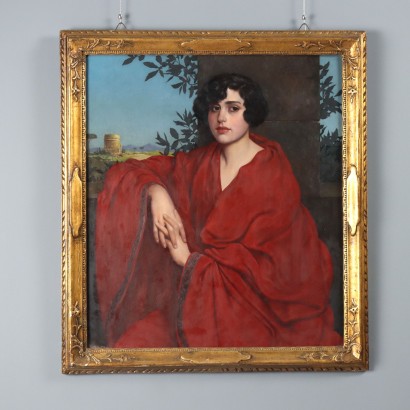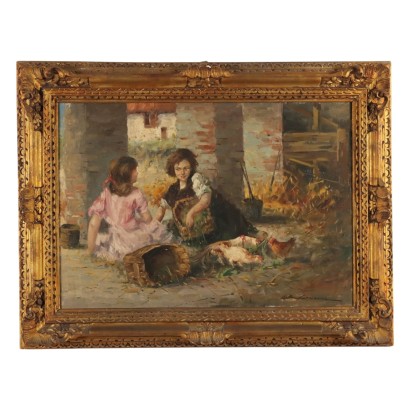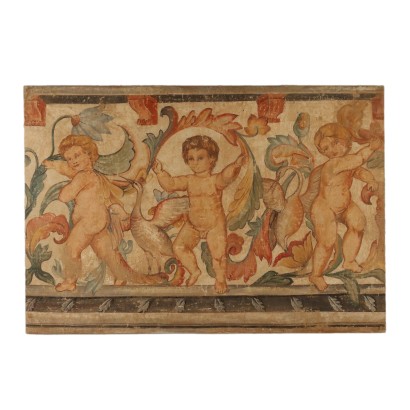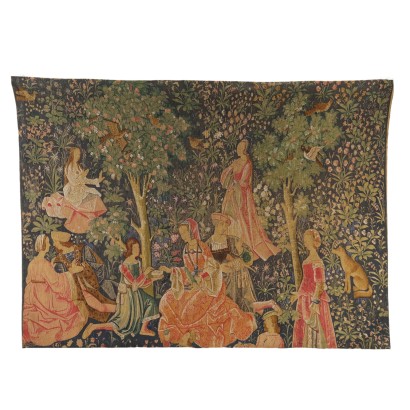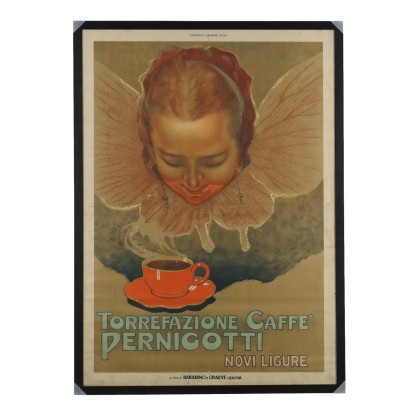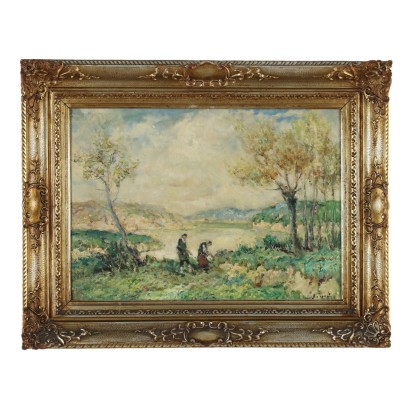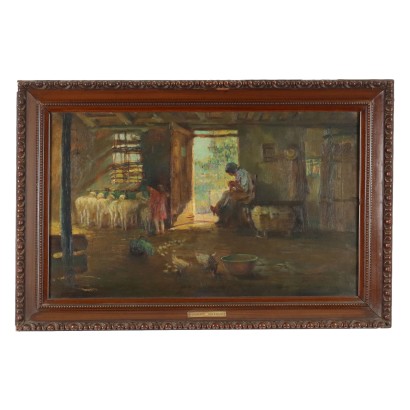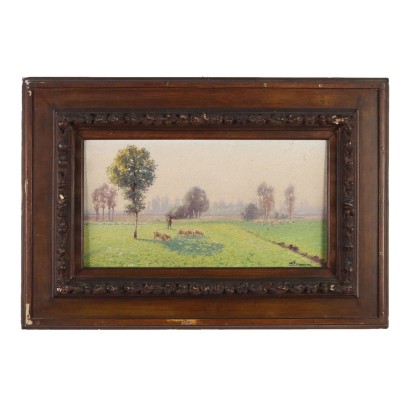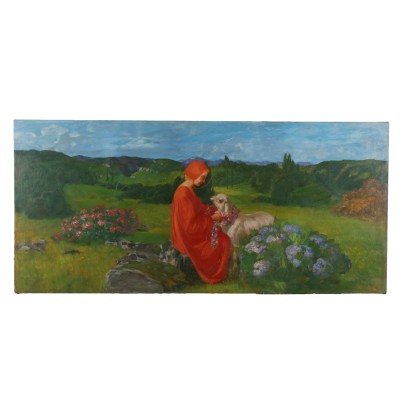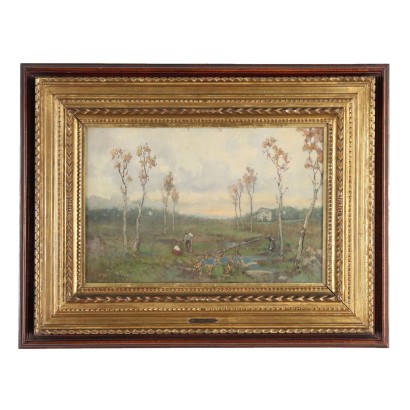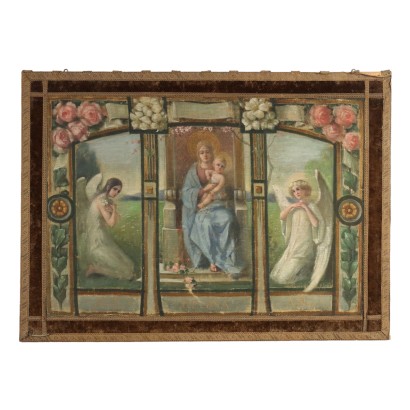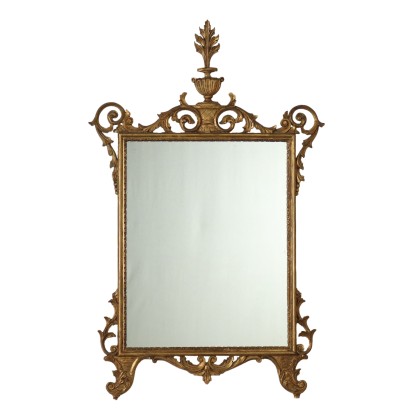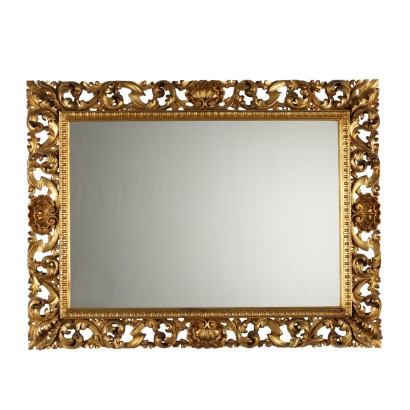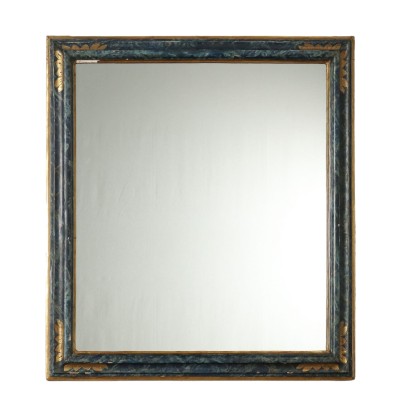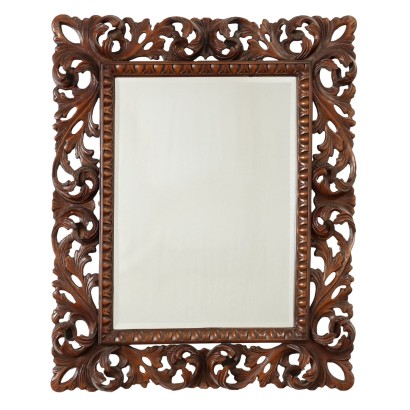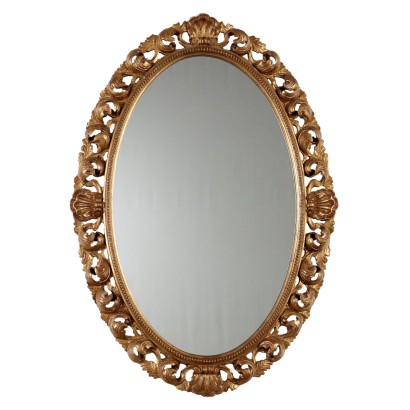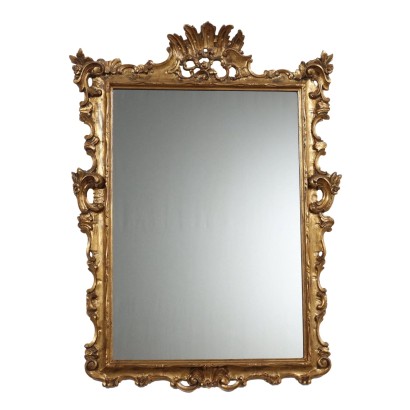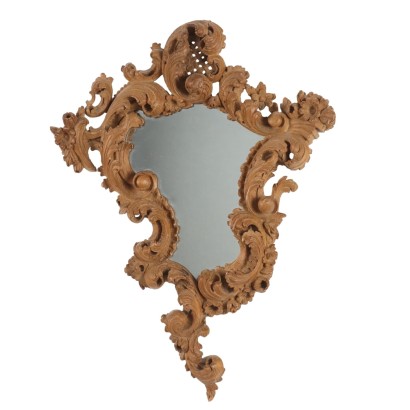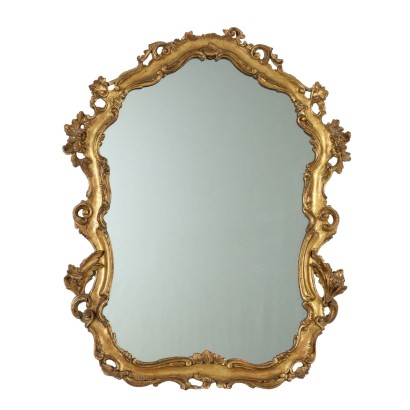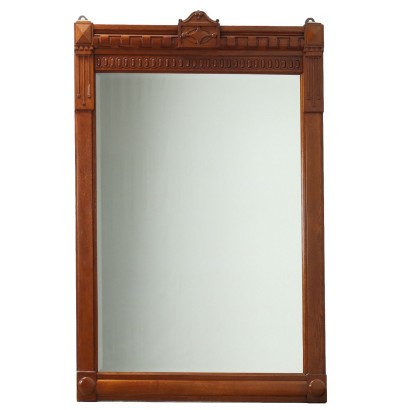Painting by Bruno Croatto - Portrait of a Young Woman with a Red Cloak,1928
Features
Portrait of a Young Woman with a Red Cloak,1928
Artist: Bruno Croatto (1875-1948)
Artwork title: Ritratto di giovane donna con manto rosso
Age: 20th Century / 1901 - 2000
Subject: Portrait/Face
Artistic technique: Painting
Technical specification: Oil on Board
Description : Ritratto di giovane donna con manto rosso
Oil on panel. Signature, date and location Rome top right. Bruno Croatto, an artist from Trieste, is considered a master of Magic Realism. His artistic production, especially after the 1920s, is oriented towards a portrait production that looks to the great masters of the Italian Quattrocento (in particular Antonello da Messina), remaining attached to the ancient tradition in language and technique, but choosing a modern language in the setting, in the clothing and, at times, in the boldness or vice versa in the haughtiness of his models. The clarity of the sign, the sharpness of the colors, the plastic strength of the objects leads Croatto to express a pure and refined naturalism, a meticulous attention to the real data. In keeping with the characteristic taste of his very refined still lifes, in which flowers, vases and oriental objects appear, or even often precious Murano glass (very popular among the bourgeoisie of the 1930s), his female portraits also feature refined elements, evening or day dresses, silks, jewels, fashionable hairstyles, and are painted both indoors and against a landscape background, often separated from the human figure by a dark drape based on the Venetian Renaissance model. Also in this female portrait, the young woman leans against the column of a loggia overlooking a Roman landscape, in which the Mausoleum of Cecilia Metella can be recognized, on the Appian Way. The model portrayed here appears in many other works by Croatto, just as the presence of an enveloping piece of clothing, a fringed shawl, a cape, a stole, often bright red, is recurrent in his portraits. The work is presented in a period frame.
Product Condition:
Product in very good condition that may show slight traces of wear; may have undergone restoration work carried out by an expert. We try to present the real condition as completely as possible with the photos. If some details are not clear from the photos, what is reported in the description is valid.
Frame Size (cm):
Height: 89
Width: 80
Depth: 4
Artwork dimensions (cm):
Height: 78
Width: 69
Additional Information
Artist: Bruno Croatto (1875-1948)
Born in Trieste on 7 April 1875, Bruno Croatto received his first artistic training in his hometown as a student of Garzolini. At the age of sixteen he went to Munich to attend a two-year course of study held by the painter G. Hackl. After returning to Italy, he participated in the II International Art Exhibition (biennial) of Venice in 1897; he was then present at these events from 1912 to 1924. In 1908, the year of his stay in Orvieto, he began to devote himself to the technique of engraving (etching and aquatint), an activity in which he particularly distinguished himself. Among his rich graphic activity, the collection of etchings of Sicilian Landscapes deserves mention, characterized by the delicacy of the sign and the immediacy of the image. He settled permanently in Rome in 1925 with his wife Igea Finzi, continuing to travel and exhibit: in Rome itself, in Trieste, in various European cities including Paris, Prague, Athens. His Munich training led him to develop an impressionistic painting of German origin, with a loose and highly contrasted brushstroke. Always with these pictorial methods, in the period between 1920 and 1923, he painted paintings of biblical subjects of particular suggestion. He later turned towards the genre of still life, taking inspiration from seventeenth-century Dutch painting and, starting from the twenties, he approached the current of Magic Realism and portraiture, being influenced by the painting of Felice Casorati, imbued with references to the Renaissance of Piero della Francesca and Antonello da Messina. Particular attention has always been reserved for Croatto by critics with regard to the personal exhibitions in Rome and Trieste, held regularly from the twenties to his death. His "verism" has been highlighted, his attachment to reality, defined as Magic Realism, sometimes for some "too objective", the point of arrival of a slow evolution, but meditated through frequent travels and the study of Italian Renaissance painting, which led him to "a sort of modern pictorial classicism". The clarity of the sign, the sharpness of the colors, the plastic strength of the objects led him to express a pure and refined naturalism, a meticulous attention to the real data. The sense of finiteness, alive in the corporeal evidence of the figures with bright, almost enameled colors, characterizes his last works. Bruno Croatto died in Rome in 1948. His works are preserved in numerous public and private European and American collections, including in Italy the Museo civico Revoltella in Trieste, the Galleria nazionale d'arte moderna in Rome and the Galleria d'arte moderna in Milan.Age: 20th Century / 1901 - 2000
20th Century / 1901 - 2000Subject: Portrait/Face
Artistic technique: Painting
La pittura è l'arte che consiste nell'applicare dei pigmenti a un supporto come la carta, la tela, la seta, la ceramica, il legno, il vetro o un muro. Essendo i pigmenti essenzialmente solidi, è necessario utilizzare un legante, che li porti a uno stadio liquido, più fluido o più denso, e un collante, che permetta l'adesione duratura al supporto. Chi dipinge è detto pittore o pittrice. Il risultato è un'immagine che, a seconda delle intenzioni dell'autore, esprime la sua percezione del mondo o una libera associazione di forme o un qualsiasi altro significato, a seconda della sua creatività, del suo gusto estetico e di quello della società di cui fa parte.Technical specification: Oil on Board
Other customers have searched:
Se sei un appassionato d'arte, non perderti i nostri approfondimenti sul Blog Arte Di Mano in Mano e su FineArt by Di Mano in Mano - Arte:
Leggi di più
Ecco alcuni tra i principali articoli:Vedute
Falsi nell'arte antica
Un messaggio di fiducia per ripartire
La potenza espressiva dell'arte figurativa etiope
Breve Storia del Collezionismo
Giorgio Upiglio, maestro dei libri d'artista
Matthias Withoos detto "Calzetta bianca"
San Rocco pensaci tu - Classic Monday
Ecco alcuni esempi dell'arte del Novecento più bella che puoi trovare da noi:
I Raccoglitori di patate - Lavoro estivo - Augusto Colombo, 1935
I Taglialegna - Lavoro invernale - Augusto Colombo, 1933
Il lavoro femminile, Contardo Barbieri, 1954 ca.
Sapevi che l'arte può essere anche un ottimo investimento (e non solo per grandi portafogli)?
L'Arte tra Collezionismo e Investimento
FineArt: Arte come investimento
Dai un'occhiata alle nostre rubriche di divulgazione sull'arte:
Epoche
Lavorazioni e tecniche
Mostre ed Eventi
Protagonisti
Product availability
The product can be seen at Cambiago
Immediate availability
Ready for delivery within 2 working days from ordering the product.

